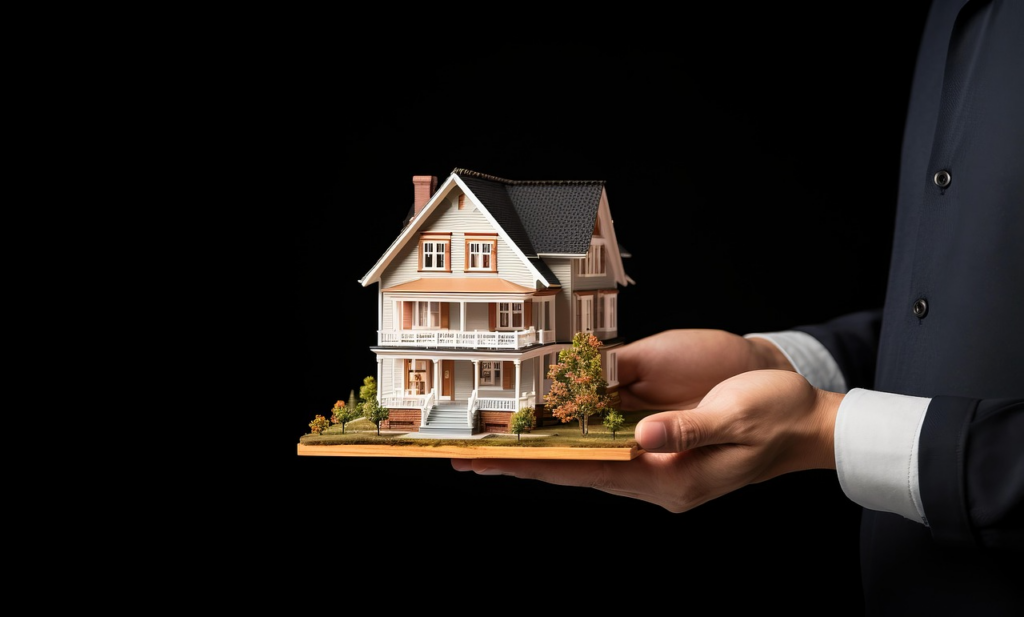Periods of financial uncertainty always push investors to rethink their strategies. When traditional markets wobble, attention shifts toward safe-haven assets that promise stability and long-term growth. Gold has traditionally filled that role and served as a symbol of wealth preservation for centuries. Yet in recent decades, another contender has emerged with equal allure: luxury real estate.
Prime properties are more than glamorous residences. They represent tangible, income-generating investments that combine lifestyle appeal with strong financial performance. For investors navigating global volatility, the idea that luxury real estate can serve as the “new gold” has become more than a metaphor — it is a reality shaping modern portfolios.
The Appeal of Luxury Real Estate as an Investment

Luxury properties occupy a unique space in the investment landscape. Unlike ordinary housing, they are insulated from many of the fluctuations that affect mass-market real estate. Wealthy buyers continue to seek them even during downturns, which creates a buffer against the risks of declining demand. At the same time, these properties often appreciate faster than standard homes due to their rarity and prestige.
The appeal also lies in the dual purpose of ownership. Investors gain a physical asset with lifestyle value while benefiting from potential rental income and capital growth. For individuals who prioritize security and exclusivity, the real estate agenсy Valerie Fitzgerald Group provides access to Beverly Hills mansions and other world-class properties. Working with a trusted luxury real estate advisor in Los Angeles, CA, ensures that investors tap into markets where long-term value remains strong regardless of broader economic shifts.
Luxury Real Estate vs. Traditional Safe-Haven Assets
Investors often compare luxury property to gold, the benchmark for wealth preservation. Each has unique qualities, but real estate brings additional advantages that gold cannot offer.
Gold: The Old Standard
Gold has served as a universal measure of wealth for centuries. Its scarcity and durability made it ideal for investors who wanted protection from currency fluctuations and geopolitical turmoil. It carries no credit risk and remains universally accepted across markets.
Yet gold also has limitations. It generates no rental yield, unlike real estate that can provide ongoing income. Storage and security costs add to the burden of ownership. Liquidity is high, but selling at the right time to capture gains often depends on volatile market cycles. While gold may serve as a hedge, it does not actively contribute to wealth growth.
Real Estate: The Modern Alternative
Luxury properties bridge the gap between safe-haven protection and active wealth building. A prime Beverly Hills estate, for instance, not only holds value but can also generate rental income from high-profile tenants. Unlike gold, luxury homes serve as both investments and lifestyle assets.
They also hedge effectively against inflation. As the cost of living rises, so does the rental potential and market price of prime properties. During the 2008 financial crisis, while many markets collapsed, ultra-prime real estate in cities such as London and New York recovered faster than equities. These case studies prove the resilience of luxury property as a modern safe-haven alternative.
Factors That Drive Value in Luxury Properties
Luxury real estate values are not determined by the same forces that drive mass-market housing. Instead, their prices reflect exclusivity, prestige, and global demand.
Location and Exclusivity
Prime addresses like Beverly Hills and Malibu illustrate the role of scarcity in driving value. These locations have limited land available for new construction, which ensures that existing properties remain highly sought after. The cultural cachet of a neighborhood further amplifies its appeal, which makes ownership both a financial and social statement.
Architectural and Lifestyle Premiums
Design and craftsmanship elevate luxury properties far above standard housing. Unique architecture, cutting-edge amenities, and privacy features transform these homes into lifestyle assets. Buyers are not simply purchasing square footage; they are investing in prestige and comfort, much like acquiring a collectible work of art.
Global Capital Flows
Wealthy investors across Asia, the Middle East, and Europe consistently target U.S. luxury markets. Political instability or currency risks in home countries often encourage them to place capital into stable markets. This global flow of wealth maintains strong demand for prime real estate, even when local economies face slowdowns.
Luxury Real Estate as Part of a Diversified Portfolio
In modern portfolio theory, diversification remains the cornerstone of risk management. Luxury properties fit naturally into this framework and provide stability and non-correlation with traditional assets.
A well-rounded investment portfolio might include:
- Equities: Growth potential with higher volatility.
- Bonds: Income and lower risk, but vulnerable to inflation.
- Gold and commodities: Traditional safe havens.
- Luxury real estate: Tangible asset with both income and appreciation potential.
- Alternative investments: Private equity, hedge funds, or venture capital.
Adding luxury real estate ensures exposure to a tangible, enduring asset class. It strengthens wealth protection while offering a potential lifestyle benefit. For ultra-high-net-worth individuals, the combination of glamour and financial resilience makes it an essential part of a diversified investment strategy.
The Role of Fintech in Shaping Access and Strategy
Technology has transformed how investors analyze, purchase, and manage luxury real estate. Fintech platforms and proptech innovations are lowering barriers, providing transparency, and enabling global participation.
Proptech and Market Transparency
Advanced platforms now provide detailed market data, neighborhood analytics, and property performance metrics. These tools reduce guesswork and empower investors to make evidence-based decisions before committing capital to high-value assets.
Tokenization of Real Estate
Blockchain technology has introduced fractional ownership and enables investors to purchase shares of prime properties without committing to full ownership. Tokenization enhances liquidity while expanding access to markets previously limited to ultra-wealthy buyers.
Cross-Border Transactions
Digital tools simplify complex international transactions. Currency conversions, compliance checks, and legal frameworks can now be navigated through fintech platforms, which makes cross-border property acquisition more efficient than ever before.
Risks and Considerations
Despite its appeal, luxury real estate is not without risks. Illiquidity remains the most significant factor. Unlike gold, properties cannot be sold instantly, and transactions require substantial time and costs.
Market cycles also influence demand. Prime properties tend to recover faster than average markets, yet downturns can still reduce short-term values and limit buyer interest. Sudden changes in interest rates, tighter lending policies, or shifts in global wealth distribution may also affect pricing and liquidity.
Taxes, maintenance expenses, and insurance add to the overall financial burden. Property management, security, and renovation projects can further reduce net returns. In some regions, foreign ownership restrictions or changing regulations create additional layers of risk.

Successful investment requires clear exit strategies, access to reliable legal and financial expertise, and careful monitoring of both local and international market conditions. Only with this level of preparation can investors fully benefit from the strengths of luxury real estate while limiting exposure to its challenges.
The New Safe Haven: Luxury Real Estate
Gold may remain a symbol of timeless wealth, but luxury real estate has evolved into a more dynamic safe-haven asset. It offers stability, active income, and lifestyle benefits while also hedging against inflation and global volatility.
Factors such as exclusivity, architecture, and international demand elevate luxury homes far beyond ordinary real estate. With fintech innovations enabling easier access and management, this asset class continues to attract global capital.
For investors seeking to diversify, luxury real estate provides the rare combination of glamour and resilience. It does not simply protect wealth; it enhances it while offering a lifestyle unmatched by any other asset. In that sense, luxury real estate has truly become the new gold for the modern era.


